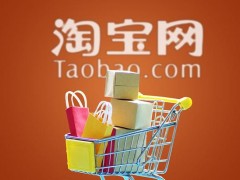What are the things in Shopee backend operation?
1.数据报表,整理前一天自己所负责的店铺数据报表,发送到运营主管邮箱。如果哪个数据较为异常,需要自行提出解决方案,让运营主管评估,并在当天执行、优化。
2.系统通知。检查Shopee后台是否有紧急消息,例如商品被禁卖、客户一星差评、店铺违规扣分甚至被冻结等等,做出对应措施解决。
3.客服。回复客户、售后订单处理、在途物流跟踪、评价回复(如果你们店铺有专职客服做这些事,运营可以不做)。
4.库存管理。查看热销商品是否有缺货,及时掌握你的商家的库存信息,在商品页面或ERP内调整库存数量。如果是自发货,一定要计算好补货周期,避免出现断货导致商品链接被下架的风险。
5.商品排名。查看手机端Shopee前台,搜索商品关键词,跟踪自己店铺商品的自然排名和广告排名,做好数据表统计,并且检查是否存在较大的波动,分析是什么原因,调整优化。
6.竞争对手分析。通过Shopee前台或利用Shopee数据分析软件监控竞争对手对标商品的排名情况,查看竞对的商品主图详情页价格等有没有发生变化,记录到表格,并采取对应措施。
7.广告优化。广告余额充值、调整广告计划。导出广告数据,分析哪些关键词应该保留,哪些应该移除,哪些需要降低花费,哪些值得提高出价。
8.活动提报。尽量和经理搞好关系,争取更优质的活动资源。如果没有经理对接,或者经理对你爱搭不理,那就看看后台有没有可以提报的活动。这些活动只要你能承担起这个折扣,并且商品资质符合平台要求门槛,都可以报名参加。通过促销活动可以更好吸引消费者,有效提升流量和转化。
9.补单。控制商品转化率,提升商品自然排名。补单通常是前一天安排第二天,因为很多时候当天安排的订单,提交给测评服务商的时候已经是中午了,可能会来不及给你执行,以至于你的补单计划被打乱,一夜回到解放前。
10.店铺营销。检查优惠券、关注礼、折扣活动是否过期,以及是否需要根据当下的进程修改优惠幅度。
11.市场调研。了解市场动态,收集竞争同行对标商品top10的信息,罗列到表格内进行分析。优化自己的产品参数,调整营销策略。尽可能了解当地消费者的习性,结合选品工具,不断根据市场开拓新产品。
Professional answer
1. Data report, sort out the data report of the store you are responsible for the day before, and send it to the operation supervisor's email. If any data is relatively abnormal, you need to propose a solution yourself, let the operation supervisor evaluate, and execute and optimize it on the same day.
2. System notification. Check whether there is an emergency message in the Shopee backend, such as the ban on the sale of goods, customers' one-star bad reviews, store violations and points deductions or even freezing, etc., and take corresponding measures to solve them.
3. Customer service. Reply to customers, after-sales order processing, in-transit logistics tracking, and evaluation replies (if your store has a full-time customer service to do these things, operations can not do it).
4. Inventory management. Check whether the hot-selling products are out of stock, keep abreast of your merchant's inventory information, and adjust the inventory quantity on the product page or ERP. If it is self-delivery, be sure to calculate the replenishment cycle to avoid the risk of out-of-stock and product links being removed from the shelves.
5. Product ranking. Check the Shopee front desk on the mobile phone, search for product keywords, track the natural ranking and advertising ranking of your own store products, do a good job of data table statistics, and check whether there are large fluctuations, analyze the reasons, and adjust and optimize.
6. Competitor analysis. Monitor the ranking of competitors' benchmark products through the Shopee front desk or use Shopee data analysis software, check whether the prices of the main pictures and details pages of the competing products have changed, record them in the table, and take corresponding measures.
7. Advertising optimization. Recharge advertising balance and adjust advertising plans. Export advertising data to analyze which keywords should be retained, which should be removed, which need to reduce costs, and which are worth increasing bids.
8. Activity submission. Try to get along well with the manager and strive for better event resources. If there is no manager to connect with, or the manager ignores you, then see if there are any activities that can be submitted in the background. As long as you can afford the discount and the product qualifications meet the platform requirements, you can sign up for these activities. Promotional activities can better attract consumers and effectively increase traffic and conversion.
9. Make up orders. Control the conversion rate of goods and improve the natural ranking of goods. Usually, the order placement is arranged the day before for the next day, because many times the orders arranged on the same day are submitted to the evaluation service provider at noon, and it may be too late to execute them for you, so that your order placement plan is disrupted and you are back to the pre-liberation period overnight.
10. Store marketing. Check whether the coupons, attention gifts, and discount activities have expired, and whether the discount range needs to be modified according to the current progress.
11. Market research. Understand market trends, collect information on the top 10 benchmark products of competitors, and list them in a table for analysis. Optimize your own product parameters and adjust marketing strategies. Understand the habits of local consumers as much as possible, combine product selection tools, and continuously develop new products based on the market.
Similar Q&A
recommend I want to start my own business, how can I find a project?
E-c News Continuously pushing e-commerce knowledge to you








Latest Q&A More
-
Do I need a trademark to open a franchise store on Pinduoduo to sell books?
#Pinduoduo#
-
How to withdraw from a Pinduoduo store
#Pinduoduo#
-
How to withdraw from Pinduoduo merchants
#Pinduoduo#
-
How to pay fees when closing a Pinduoduo store
#Pinduoduo#
-
How to withdraw from Pinduoduo
#Pinduoduo#
-
Which store on Pinduoduo is authentic?
#Pinduoduo#
-
Which stores on Pinduoduo can buy genuine products?
#Pinduoduo#
-
How to check the store under Pinduoduo
#Pinduoduo#
-
How to receive Pinduoduo online game products
#Pinduoduo#
-
How to sell the electronic version on Pinduoduo
#Pinduoduo#
E-c News 2025-11-19 01:22:38

- African netizens use China Africa cross-border e-commerce platform for online shopping
- how is the new seller of cross-border e-commerce doing?
- how can cross-border e-commerce Amazon sell on Amazon platform without goods?
- Amazon store opening process and cost analysis!
- Amazon plans to expand its pharmacy business on a large scale and will add same day delivery service
